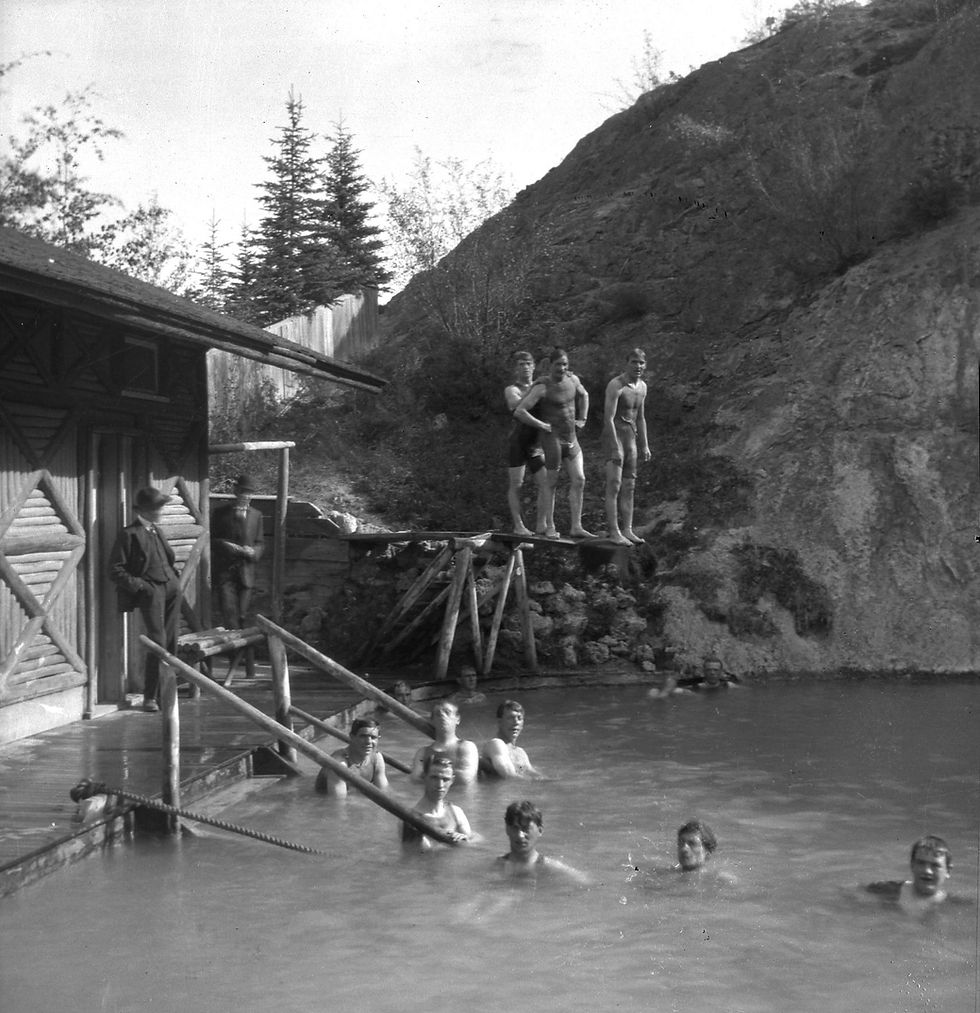The Case for Thomson in the Rockies
- Jul 16, 2020
- 3 min read
By Anne Ewen, Chief Curator of Art and Heritage
Tom Thomson (1877 – 1917, Canadian)
Canadian modernist painter Tom Thomson is remembered mostly for his famous paintings The West Wind and Jack Pine. His mysterious death by accidental drowning at the age of 30 at Canoe Lake, Ontario continues to fuel suspicion. The 2013 discovery of a small oil painting in a British shop propelled speculation about Thomson’s unknown trip to the Canadian Rockies in 1913 and thus began research compiled by Debra Hay, a Canadian living in England. Additional evidence was provided by Angie Littlefield, author of four books about Tom Thomson and his family.
The Case for Thomson in the Rockies
The following paraphrased information is from the researched documentation of both Debra Hay and Angie Littlefield.

Tom Thomson #2
When the painting labeled 2 (above) appeared in 2013, it was the only known alpine scene attributed to Tom Thomson, with confirmation about provenance still required. Then in 2014, two other small oils (numbers one and three, below) surfaced. Each exhibited the similar signatures, size and support. To establish attribution, the paintings were analyzed using the techniques of the Canadian Conservation Institute with the findings agreeing to dates within Thomson’s painting career. Canadian art historian and author Dennis Reid was then consulted as were art specialists Ian Dejardin and Virginia Eichhorn.
Local photographer Paul Zizka believes photographic image 1 (below) to be from around Hector Lake. When comparing Byron Harmon’s 1914 photograph below, it illustrates a trail used by Jimmy Simpson to access one of his main camps. A mountain guide and amateur painter, Simpson was frequently hired by artists, hunters and explorers. Did Thomson hire Simpson for a backcountry excursion in 1913?

Hector Lake, [b/t 1903–1940], Byron Harmon/Photographer,
WMCR, Byron Harmon fonds (V263/NA-1792)

Tom Thomson #4
The painting labeled 4 is believed to be the Oskaloosa Hotel in Canmore which was demolished in 1920 (below). A mining town with a working-class lifestyle, Canmore would have appealed to Thomson. The thickness of the oil paint implies the image was constructed en plein air in relatively cold weather. Late summer, early autumn snow is not uncommon in the mountains.

Image Provided by Researchers
Observed on the mine side of Canmore, note the shape of the miners’ cabins and the large tree at the rear. The Thomson painting would be from the right of the provided line. Local historian and photographer Rob Alexander has identified the view across the valley as Mt. Lady MacDonald. Additional photographic images of the area are available for viewing in the Whyte Museum Archives by appointment.
From Byron Harmon’s image of men taking the waters at Banff's Cave and Basin (below), we observe a man centre foreground with features consistent with those of Thomson. Ms. Hay consulted sculptors Sandra J. Smith and Sean Hedges-Quinn and while neither confirmed 100% that it was Thomson, they did not deny that it could be. On further scrutiny, the individual next to Thomson bears a striking resemblance to Thomson’s friend Archey Belaney, who would later morph into a new persona named Grey Wolf.

196. Hot Springs Bath, stereo, [b/t 1903-1940], Byron Harmon/Photographer,
WMCR, Byron Harmon fonds (V263/I/A/I/NA-5958)
According to Canadian art historian Joan Murray, Thomson met Belaney in 1912, while on a canoe trip in Ontario. The men became friends and met again in Toronto during the winter of 1912–1913 and in the summer of 1913 while working as fire rangers. These documented meetings increase the probability of a 1913 summer trip to Banff.
Interestingly, before Belaney went off to World War I, Thomson sent him three art works. All three were later sold and eventually purchased by new owners in Europe. Grey Wolf may have carried these paintings with him to Hastings where he visited the two aunts who raised him. Grey Wolf is known to have made two tours in 1935–36, again in 1937–38, and could easily have transported these small oils to the United Kingdom.
Presently there is much speculation about the locations for the paintings labeled 1 and 3.

Tom Thomson #1

Tom Thomson #3
From the intense research conducted by Ms. Hay and the scrutiny provided by the above listed art historians, along with Tom Thomson expert Angie Littlefield, these paintings are considered original works by Tom Thomson.
These four paintings are currently featured in our exhibition, Drawn to the West and are on display until January 17, 2021.



Comments